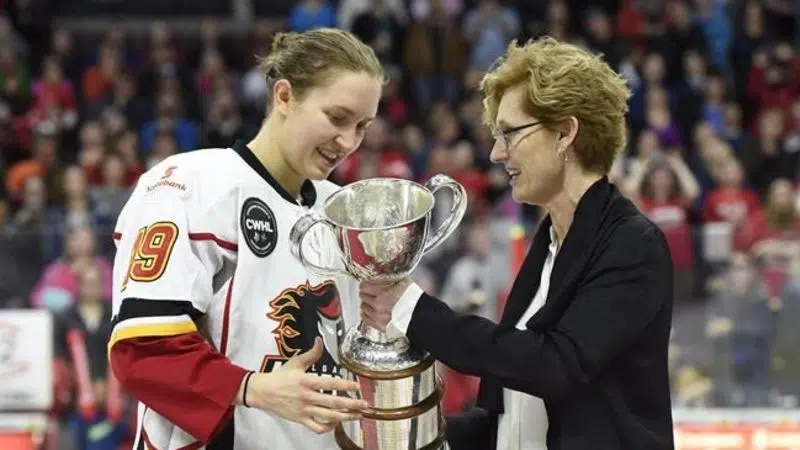
Former governor general has faith her trophy will endure for women’s hockey
The Clarkson Cup will continue to reward women’s hockey champions in Canada regardless of a league’s uncertain future, says former governor-general Adrienne Clarkson.
Clarkson, the country’s governor general from 1999 to 2005, commissioned and donated the trophy meant to be the female equivalent of the NHL’s Stanley Cup.
The Clarkson Cup was hoisted into the air by the victorious team in the Canadian Women’s Hockey League, which has abruptly announced it will fold after 12 years.


